Absence from the forum due to state of garden, discouraged
Anna-Lyssa Zone9
6 years ago
last modified: 6 years ago
Featured Answer
Sort by:Oldest
Comments (56)
Related Discussions
Roses purchased from recommendations from this forum?
Comments (33)Course I have. Being jaded and cynical, I have some immunity from catalogue pics and growers promises....but have been helpless against the rose reviewers here....Jeri and Kim had a joint effort with Dawn Crest....and pointed me in the direction of Bierkreek nursery. Then there were many ecstatic mentions of Darlow's Enigma and a request for good foliage led me to Ghislaine De Feligonde. Mr.Bluebird (think that is one of Ingrid's). I could go on (Jacqueline Humery, Aimee Vibert, R.soulieana.........even an Iceberg revival) Conversely, I have been warned about miffs and duffers (although I have been more reticent to act on the suggestions, probably because the orders were already in and hope rules eternal) - For sure, I was warned about Jacqueline Du Pre (ignored)....See MoreFirst-time gardener discouraged by cold snap. What now?
Comments (24)Hi Steffie! Your experience with bermuda grass reminds me why I HATE bermuda grass. :) My brother put down black plastic (plain old black plastic like trash bags are made of, not the fabric mulch type) on a newly tilled flower bed and planted perennials right through it. When he removed that plastic FIVE YEARS LATER, there were still those long bermuda runners everywhere. I never try to make a new lasagna bed without removing the sod first, having learned the hard way. I found it interesting that your grandmother raised her crops in stages. I do the same thing, and have never met anyone here who does it in the precise, regimented way that I do. I'll use tomatoes as an example since they are the crop I grow the most of. I start my earliest seedlings, about 70% of my main season tomato crop, on Super Bowl weekend. Then, six weeks later I start the other 30%. I plant out in cycles, beginning in mid to late March most years, and get the late ones from the second planting into the ground by late April. Then, in mid to late-May I start seeds for fall tomatoes, or take and root cuttings in mid-June. I get the fall tomatoes in the ground in late June to early July. In late August I start seeds for a few winter tomatoes in containers, generally small-sized ones like Window Box Roma, Red Robin, Yellow Canary, etc. These tomatoes in pots can go into the garage or house during cold spells and extend the fresh tomato season quite a bit. I do similar succession plantings of most veggies, including beans (every three weeks), corn (every 5 weeks), melons (generally an early planting in mid-April and a late planting in late May), summer and winter squash, peppers, okra and black-eyed peas. I do the same thing with flowers. Take sunflowers. I plant different ones for each season. So, my spring sunflowers which will begin blooming in May most years, are some of the ones lightest in color like Italian White and Moonshadow and any of the ones with the lemon-yellow petals. The summer-blooming ones, which usually begin blooming in July, are the really golden-colored ones, of which there are many varieties. The late-summer to fall blooming ones are those in tawny fall-type colors like Autumn Beauty, Earthwalker, and any of the red-flowered ones like Chianti or Prado Red. So, I always have flats of replacement plants started and it is easy to put them in the ground and plug them into holes in my garden at any time. It can get rather complicated to keep track of what needs to go where and at what time, but by staggering plantings, I have found I can have a wonderful garden each and every week of the summer. Right now, I am starting flower seeds in small paper cups. These plants will go into the ground in mid-May. The first week in May, I start flower seeds that will go into the ground in June for blooms beginning in July. And so it goes, on and on and on. With all the stages of planting, I always have something new coming along and that pleases me. Dawn...See MoreState of the garden - 8/1
Comments (25)Jo, are your fruit trees all grouped into an orchard-type of situation? If so, and you can manage to water several of them at once, you might try doing what the commercial growers in the hot and dry west do every year. They deep soak the trees, but only about 3 times over the summer. Say every 30 days. I know that sounds awful, considering our heat, but it seems to work. Set your irrigation so it can reach as many trees as possible, or hook up in-line sprinklers to do the whole thing at once, and then let them run all night . . . 12 hour minimum. 24 hours is better, but I don't think any of us can stand that kind of water use. The trees will do better than way than they will if you try to water them every few days. It seems like a terrible use of water, but if you're only doing it once a month, it balances out on the positive side. We had a small apple orchard of about 50 trees and it was always deep irrigated. A lot of the evergreens require regular water and can't take extended dry heat. One that will survive and look good is the Italian cypress, but like so many similar things, they tend to harbor ticks. I don't care for the upright columnar growth, but the tick situation would keep me from planting them. I'm afraid I'm not much help on your other stuff, except to say that things like grapes and berries can go a v-e-r-y long time without water, even when it's really hot and dry. They can tolerate extreme conditions, although they probably won't produce as well in a year like this. The vineyards in CA are never watered in the summer. The blackberries will come back next year with no summer water at all. The fruit is bigger and plumper if they get water. I read somewhere that strawberries need at least an inch of water a week, but mine in the raised bed are needing that much and more to keep them alive. Pat...See MoreCome back Mediterranean Garden forum members
Comments (6)Planting in the right season, after it cools down in fall and can be expected to rain), and planting smallest size plants and mulching heavily goes a long way towards to getting plants well established to survive their first Mediterranean climate summer. If someone is having major problems keeping well known Medit climate native survivors such as Rosemary and Lavenders alive, it is just as likely due to trying to force them to adapt at the wrong season, and not paying attention to natural cycles. For a garden in Greece with extreme heat and poor water quality, I'd recommend that you pay extreme attention to what already does grow well in your neighborhood, and only plant new smaller plants out in November/December. Also, it is important to remember that not all Mediterranean climate zones are equal as to amount of cold in winter, amount of winter rainfall, length of dry season, and amount of summer heat and winds. I'm located in coastal northern California, where we are a Mediterranean climate rainfall pattern, but have next to no summer heat, and have much reduced drying out of soils and plants because we get so much summer fog and overcast which keeps things cooler and less dry. Trying to grow things in high summer heat with poor water quality is not a foreign concept in parts of southern California, and tried but true methods often rely on choosing desert or high heat adapted plants, and providing moderated shading in summer for plants that can't take full hot sun with such high heat. I'd suggest that things like American southwest desert species of Agaves, Leucophyllum species, Teucriums, Phlomis, Cistus, and things native to the Mediterranean Basin that are adapted to limestone soils would be the natural approach to take where it is both hot, dry and basic soil ph. A lot of plants from Mexico and South Africa as well as Australia would do well under such conditions. Where I garden in Berkeley, it is even balmier than the Algarve in Portugal, and we often have more in common with tropical Cloudforest habitats than other Mediterranean zone climates, due to our foggy summers and cold offshore ocean currents. I grow many of the same succulents that Orchis mentions, but some of the more frost tender Kalanchoe species are both prone to rotting and occasional freezing in our wetter/colder winters here near San Francisco. Some of the more tender Aeoniums such as A. canariensis can grow fantastically well here, but an occasional cold winter's frost can also do major damage. Some all purpose plants that I could recommend as survivors in high heat might include Aloe saponaria and Aloe ferox, Bulbine frutescens, Agave bracteosa(in partial shade), Agave parryi, Artemesia species, Arctotis cultivars, Brachychiton populneum, Brahea armata, Caesalpinia mexicana, Centauria gymnocarpa, Centranthus ruber, Ceratostigma plumbaginoides(in partial shade), Convolvulus sabatius, Correa species, Cotinus coggygria, Cussonia paniculata,......See Morenoseometer...(7A, SZ10, Albuquerque)
6 years agoAnna-Lyssa Zone9 thanked noseometer...(7A, SZ10, Albuquerque)Anna-Lyssa Zone9
6 years agoUser
6 years agoAnna-Lyssa Zone9
6 years agoKristine LeGault 8a pnw
6 years agoCassandra Wright (6b PA)
6 years agoRosylady (PNW zone 8)
6 years agojerijen
6 years agoingrid_vc so. CA zone 9
6 years agoUser
6 years agoUser
6 years agocathz6
6 years agoingrid_vc so. CA zone 9
6 years agoAnna-Lyssa Zone9
6 years agoMelissa Northern Italy zone 8
6 years agolast modified: 6 years agonoseometer...(7A, SZ10, Albuquerque)
6 years agoKristine LeGault 8a pnw
6 years agojerijen
6 years agoAnna-Lyssa Zone9
6 years agoingrid_vc so. CA zone 9
6 years agotitian1 10b Sydney
6 years agoCori Ann - H0uzz violated my privacy
6 years agoMelissa Northern Italy zone 8
6 years agoUser
6 years agoCori Ann - H0uzz violated my privacy
6 years agolast modified: 6 years agoAnna-Lyssa Zone9
6 years agoingrid_vc so. CA zone 9
6 years agolast modified: 6 years agoUser
6 years agotitian1 10b Sydney
6 years agoUser
6 years agoMelissa Northern Italy zone 8
6 years agolast modified: 6 years agoAnna-Lyssa Zone9 thanked Melissa Northern Italy zone 8Cori Ann - H0uzz violated my privacy
6 years agolast modified: 6 years agoAnna-Lyssa Zone9 thanked Cori Ann - H0uzz violated my privacyCori Ann - H0uzz violated my privacy
6 years agolast modified: 6 years agoingrid_vc so. CA zone 9
6 years agoAnna-Lyssa Zone9
6 years agojerijen
6 years agoVaporvac Z6-OhioRiverValley
6 years agoCori Ann - H0uzz violated my privacy
6 years agolast modified: 6 years agoUser
6 years agojerijen
6 years agoCori Ann - H0uzz violated my privacy
6 years agolast modified: 6 years agoUser
6 years agolast modified: 6 years agoUser
6 years agoingrid_vc so. CA zone 9
6 years agoMelissa Northern Italy zone 8
6 years ago
Related Stories

LANDSCAPE DESIGN12 Ideas From Stunning Fall Gardens
From highlighting dramatic foliage to showcasing luminous grasses, here’s how to make the most of your garden this season
Full Story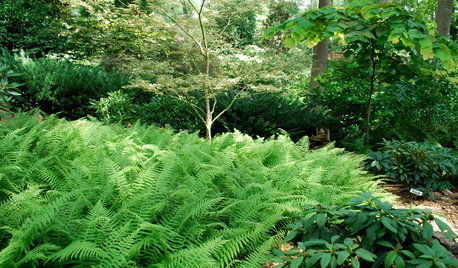
PLANTING IDEASFerns: A Shade Gardener’s Best Friend
Bring rich texture and contrast to a dark woodland landscape with wonderfully diverse ferns
Full Story
GARDENING GUIDESGet the Dirt on Your Garden’s Soil
Understand how your soil supports your plants so you can ensure your garden’s success
Full Story
GARDENING GUIDESSmall Gem Lawns: More Impact From Less Grass
Instead of letting the lawn sprawl, make it a shapely design element in your yard. You’ll reap benefits both practical and aesthetic
Full Story
GARDENING GUIDES6 Captivating Roses for an Alluringly Fragrant Garden
Perfume your garden with aromas from richly spicy to lightly sweet, without sacrificing an inch of color
Full Story
GARDENING GUIDES8 Materials for Raised Garden Beds
Get the dirt on classic and new options for raised vegetable and plant beds, to get the most from your year-round garden
Full Story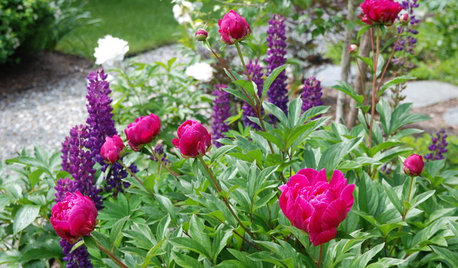
REGIONAL GARDEN GUIDESDelight in Summer’s Garden Glories — Here’s What to Do in June
Wherever you live in the United States, these guides can help you make the most of your summer garden
Full Story
GROUND COVERSGround Force: 10 Top Ground Covers for Your Garden
Protect your soil from weeds and drought this summer with a living mulch of ground covers
Full Story
GARDENING FOR BUTTERFLIESGardening for the Bees, and Why It’s a Good Thing
When you discover how hard bees work for our food supply, you may never garden without them in mind again
Full Story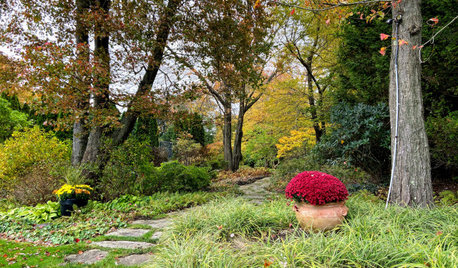
GARDENING GUIDES4 Elements of a Stunning Fall Garden
Late summer is a good time to look beyond trees to create an autumn landscape that draws the eye and stirs the soul
Full Story










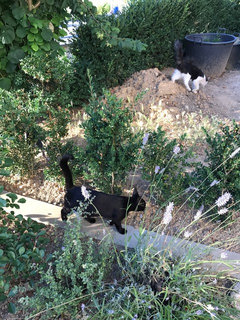

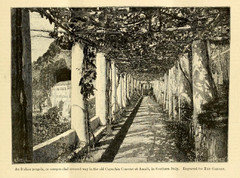




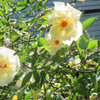


Rosylady (PNW zone 8)